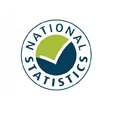next
Household Projections for Scotland 2006-based
This document is also available in pdf format (3.28MB)
First published on 8 May
2008
1st correction 9 October 2008
2nd correction 30 November 2009
Corrections
The high migration variant
population projections from the "2006-based Population Projections
for Scottish Areas" were first corrected in October 2008. The
corrections resulted in some small changes in the high migration
variant household projections and the corrected figures can be found
in Table 18 and Figures 8 and 9 in this publication. The percentage
change column in Table
14 has also been
corrected.
In November 2009 further corrections were made1.
These corrections have resulted in changes to figures for Scotland
and Fife. Total figures for Scotland and Fife differ by at most 20
households, when compared to original figures. However, the figures
for Fife do vary more for individual age groups. There are
reductions in the number of households headed by those in younger
age groups, up to age 29. In contrast there are increases in
households headed by those in older age groups. Figures for all
other local authority areas are not affected.
Contents
1. Summary of Results
2. Notes on the household projections
3. Results
3.1 Overall number of households (Table 1)
3.2 Type of household (Table 1)
3.3 Age of head of household (Table 2)
3.4 Household type by age of head of household (Tables 3 and
4)
3.5 Household projections by household type and local authority
area (Tables 5-17)
3.6 Household projections by age of the head of household and local
authority area (Tables 11-16)
3.7 Projected average household size by local authority area (Table
17)
4. Comparisons with previous household projections
5. High migration variant projection
6. Household projections methodology
6.1 Brief summary of the methodology
6.2 Household types and age groups used in the household
projections
6.3 Household projections methodology part 1: Population
projections
6.4 Household projections methodology part 2: Household
composition
7. Definitions, uses and limitations of the household
projections
7.1 Definitions used in the household projections
7.2 Uses
7.3 Limitations
7.4 Population projections
7.5 The use of Census-based trends in household formation
patterns
7.6 Relationship to other projections
8. Related publications
List of Tables
Table 1: Household projections for Scotland, by type of household,
2006-2031
Table 2: Household projections for Scotland by age of the head of
household, 2006-2031
Table 3: Projected households in Scotland by household type and age
group of the head of household: 2006-2031
Table 4: Projected percentage of people living alone, by gender and
age group: 2006-2031
Table 5: Household projections for Scotland, by local authority
area, 2006-2031: All households
Table 6: Household projections by local authority area and
household type, 2006 and 2031: Percentage of households of each
type
Table 7: Household projections for Scotland, by local authority
area, 2006-2031: One adult households
Table 8: Household projections for Scotland, by local authority
area, 2006-2031: Households with one adult and one or more
children
Table 9: Household projections for Scotland, by local authority
area, 2006-2031: Households with two or more adults
Table 10: Household projections for Scotland, by local authority
area, 2006-2031: Households with two or more adults and one or more
children
Table 11: Household projections for Scotland, by local authority
area and age group, 2006 and 2031: Percentage of households headed
by someone in each age group
Table 12: Household projections for Scotland, by local authority
area and age group, 2006-2031: Households headed by someone aged
16-29
Table 13: Household projections for Scotland, by local authority
area and age group, 2006-2031: Households headed by someone aged
30-44
Table 14: Household projections for Scotland, by local authority
area and age group, 2006-2031: Households headed by someone aged
45-59
Table 15: Household projections for Scotland, by local authority
area and age group, 2006-2031: Households headed by someone aged
60-74
Table 16: Household projections for Scotland, by local authority
area and age group, 2006-2031: Households headed by someone aged
75+
Table 17: Projected average household size, by local authority
area, 2006-2031
Table 18: Comparison between principal and high migration variant
household projections by local authority area, 2011-2031
List of Figures
Figure 1: Projected number of households in Scotland by household
type, 2006 and 2031
Figure 2: Projected number of households in Scotland by age of head
of household, 2006 and 2031
Figure 3a: Percentage of people living alone in 2006, by age and
gender
Figure 3b: Projected percentage of people living alone in 2031, by
age and gender
Figure 4: Projected number of households in Scotland by household
type and age of the head of household: 2006 and 2031
Figure 5a: Projected number of households, by local authority area,
2006 and 2031
Figure 5b: Projected percentage change in the number of households,
by local authority area, 2006 to 2031
Figure 6: Comparisons with previous household projections (2000,
2002, 2004 and 2006-based)
Figure 7: 2004 and 2006–based population and household
projections
Figure 8: Principal and high migration variant, 2006-based
population and household projections for Scotland.
Figure 9: Percentage change in households 2006 – 2031, using
the principal and high migration variant projections, by local
authority area
List of Maps
Map 1: Projected percentage change in households by local authority
area, 2006 to 2031
Map 2: Projected percentage of households containing one adult with
no children by local authority area, 2031
Map 3: Projected percentage of households with children by local
authority area, 2031
Map 4: Projected percentage of households headed by someone aged 60
and over by local authority area, 2031
A National Statistics publication for Scotland
National Statistics are produced to high professional standards
set out in the National Statistics Code of Practice. They
undergo regular quality assurance reviews to ensure that they
meet customer needs. They are produced free from any
political interference. |
 |
next
